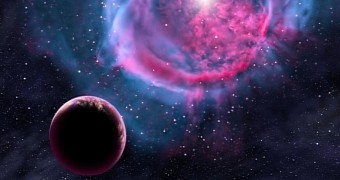In a report accepted for publication in The Astrophysical Journal, scientists with the Harvard-Smithsonian Center for Astrophysics announce the discovery of a total of eight previously undocumented so-called Goldilocks planets.
The researchers explain that Goldilocks planets are celestial bodies found in the habitable zone of their parent star. What this means is that it is possible that the newly found planets host liquid water, maybe even extraterrestrial lifeforms.
Besides, the astronomers behind this discovery have reasons to believe that the majority of these celestial bodies resemble our good old Earth in that they are rocky. As study lead author Guillermo Torres put it, “Most of these planets have a good chance of being rocky, like Earth.”
Two of the newly found planets stand out from the crowd
In the paper detailing their work, the Harvard-Smithsonian Center for Astrophysics scientists explain that, of these new planets that were discovered journeying through space in the habitable zone of their parent star, two stand out from the crowd.
The planets in question go by the name of Kepler-438b and Kepler-442b, and they each orbit a red dwarf star. In case anyone was wondering, red dwarf stars are celestial bodies that are smaller than our Sun and that burn their fuel at a fairly slow pace. As a result, they are rather cool and do not shine as bright as others do.
What's interesting is that these celestial bodies sit not very far from us. Thus, Kepler-438b is merely 470 light-years away, whereas the distance between Earth and Kepler-442b is estimated to be one of approximately 1,100 light-years.
It is understood that Kepler-438b's and Kepler-442b's diameter is about 12% and 30% greater than that of our planet, respectively. Kepler-438b takes 35 days to orbit its star, and its chances of being rocky are about 70%. Kepler 442b, on the other hand, has an orbit of 112 days and a 60% chance of being rocky.
Of these two newly discovered planets, the former gets about 40% more light than our own. The amount of light that reaches the latter is 60% greater than that heading our way on a daily basis. Still, the fact remains that these celestial bodies are the most similar to Earth thus far discovered.
Hold your horses, brainiacs are yet to find alien life on them
True, Kepler-438b and Kepler-442b are strikingly similar to our planet and are very likely to hold liquid water. Still, this does not mean that it's a sure thing that they also host alien lifeforms. It just means that the celestial bodies look like they are life-friendly.
“We don't know for sure whether any of the planets in our sample are truly habitable. All we can say is that they're promising candidates,” Harvard-Smithsonian Center for Astrophysics research David Kipping commented on the outcome of this investigation in an interview.
Astronomers plan to continue studying the newly discovered Goldilocks planets and hope that they will soon be able to determine whether or not the celestial bodies are in fact habitable and are home to an environment in which lifeforms could emerge and evolve.

 14 DAY TRIAL //
14 DAY TRIAL //